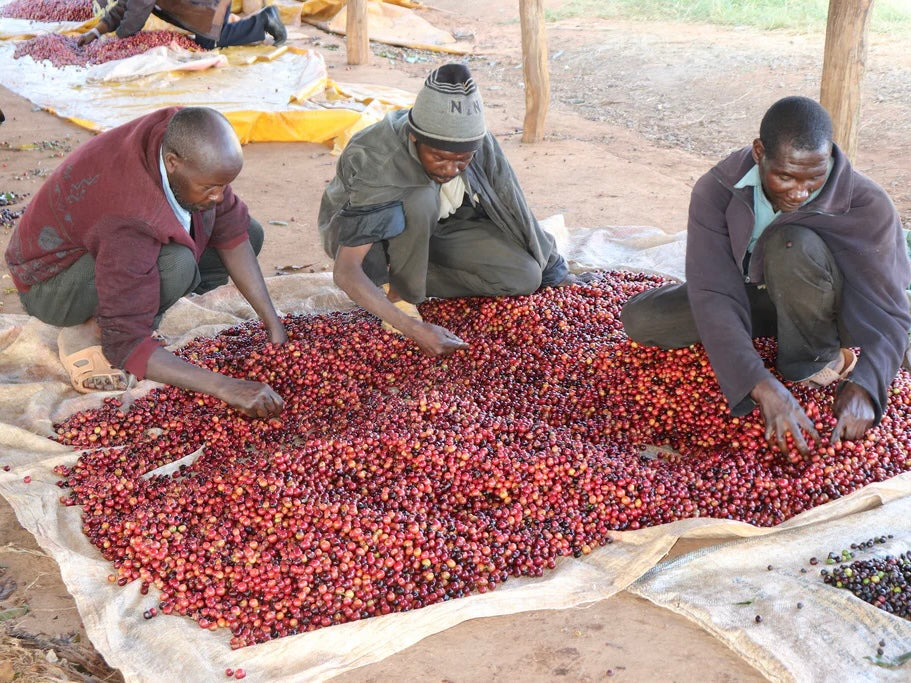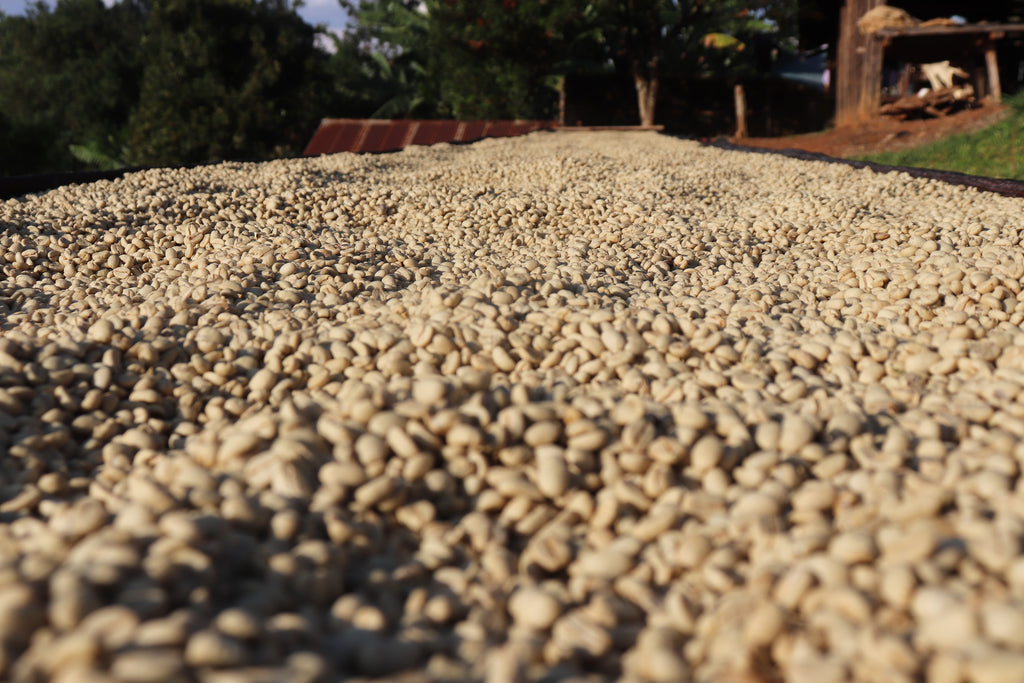
AA RIAKIBERU/KENYA
AA RIAKIBERU / KENYA
Flavor Profile :
Red currant, candy, Bright.
Country of origin: Kenya
Factory : Riakiberu Coffee Factory
Cooperative: Kamacharia Farmers Cooperative Society
Producers : 1542 active members
Area: Muranga District ( Muranga ) > Kamacharia District ( Kamacharia )
Variety: SL-28, Batian,Ruiru 11, (mainly SL varieties)
Process: Washed
Altitude: 1650masl
Harvest: 2021-2022
In Kenya, grading is traditionally based on the size of the bean within the coffee cherry.
Grades are based on the size of the sieve, known as the sieve size, and the names of Kenyan coffees, such as AA, AB and PB, indicate the sieve size/grade.
Of these, AA is traded as the highest grade in terms of both size and quality and is a coffee of excellent quality with juicy acidity, rich sweetness and powerful fruitiness.
AA Riakiberu has a typically Kenyan taste that continues to fascinate us, with complex and wonderful flavours of blackcurrant and intense red fruit.

An hour or two's drive north of Nairobi takes you to the Muranga cluster.
The Muranga cluster is a coffee growing area between Nyeri and Nairobi and the Riakiberu Coffee Factory is part of the Kamacharya FCS in the Kamacharya District of Muranga County.
The factory was established in 1994 and currently has 1542 active and participating producers.
The area is covered by red volcanic soil, which provides the full range of mineral and organic benefits required for coffee production.
At an altitude of 1,650m, the annual rainfall is 1,200ml and the average temperature is relatively cool, ranging from 16-26°C.
In addition to coffee, bananas and maize are often grown on the farms.
Macadamia and other trees are also planted to provide shade for the coffee trees.

The farmers in this cooperative mainly grow SL28, Batian and Ruiru 11.
In Kenya, it is estimated that 55% of coffee farmers are smallholders, and since the amount of coffee that can be grown and harvested by a single smallholder is very small, each farmer belongs to a neighbouring FCS (Farmers Cooperative Society) and delivers the harvested coffee cherries to a factory run by the FCS for refining.
The factory then delivers the refined parchment to a dry mill/exporter through the FCS for sale to roasters and importers outside the country.
In addition to these sales transactions, FCS also works to maximise production per farmer by providing agricultural training to its members through agronomists, teaching them how to use fertilisers and materials.

On arrival, the cherries are spread out on sheets in the sorting shed and further sorted by hand to determine which cherries are properly ripe and which are not.
Factory workers are also present to ensure that the sorting is done correctly.
Only properly ripe cherries are collected and fed into the depulping machine.
This machine removes the skin that covers the parchment.
After passing through the machine, the coffee beans are covered with a protective shell called parchment.
At this stage, the parchment is covered with a sticky mucilage made up of natural sugars and alcohol.
The mucilage contributes significantly to the coffee's sweetness, acidity and overall flavour profile.
The mucilage-covered parchment is placed in fermentation tanks where it ferments for approximately 12-24 hours, depending on the temperature.
Once the fermentation has broken down the mucilage, the parchment is transferred to another tank of clean water and washed again; the washed beans feel gritty in the hand, which means they are ready for drying.

When the parchment is ready to be dried, it is placed on a skin dry bed, a bed covered with netting, where it is dried to the specified moisture content over a period of 6 hours - in some cases a whole day.
Having just been washed in the previous process, the parchment contains about 50% moisture. It is dried in this bed until it reaches about 20% moisture.
Once dried to the specified moisture content, the parchment is then placed on an elevated drying table, called an African bed, where it is slowly dried over a period of 10-22 days.
It is generally accepted that the longer the drying time, the more balanced and complex the cup will be.
 To purchase, please click on the link below!
To purchase, please click on the link below!
→AA Riakiberu🇰🇪



